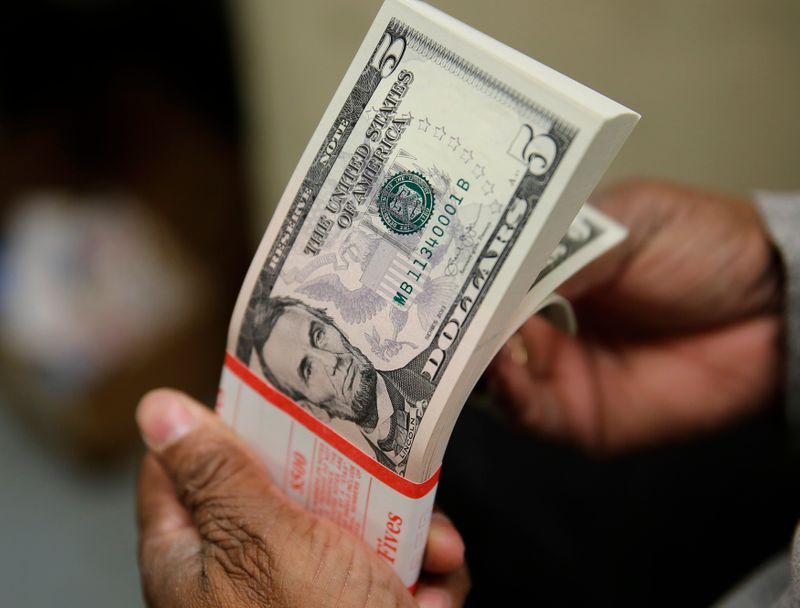By Kevin Buckland
TOKYO (Reuters) – The dollar hovered near a three-week low against major rivals on Tuesday, pressured by lower Treasury yields as traders awaited highly anticipated U.S. inflation data later in the global day.
The greenback has retreated along with U.S. yields this month after surging to multi-month peaks on expectations that massive fiscal stimulus coupled with continued monetary easing will spur faster U.S. economic growth and higher inflation.
Retail sales figures due Thursday will also be closely watched.
Boston Federal Reserve Bank President Eric Rosengren said on Monday that the U.S. economy could see a significant rebound this year thanks to accommodative monetary and fiscal policy, though the labor market still has much room for improvement.
The dollar index, also known as DXY, edged slightly higher to 92.170 early in the Asian session, but still near Thursday’s low of 91.995, which was the weakest since March 23. It had rallied to a nearly five-month high of 93.439 on the last day of March.
“DXY has been slipping in recent days but should find stability with the U.S. macro outperformance narrative set to get a strong airing” in data this week, Westpac strategists wrote in a client note, projecting a rally toward 94.500.
“Treasury issuance is surging at the same time as inflationary pressures show in the data, which should lift the U.S. dollar.”
Westpac expects 10-year Treasury yields to rise toward the top of its recent 1.6-1.755% range this week.
The benchmark yield was at 1.6764% on Tuesday. It had surged to a more than one-year high of 1.7760% on March 30.
New supply is also a driver of yield direction this week, with the Treasury selling 30-year bonds on Tuesday, following good demand at auctions of three- and 10-year notes on Monday. [US/]
“How Treasury yields react to this week’s supply and to key U.S. data releases will undoubtedly provide direction for the USD in the near-term,” Rabobank currency strategist Jane Foley wrote in a report.
“A strong (CPI) print may re-invigorate inflation fears and lend support to the USD.”
Foley forecasts the dollar to trade “choppily” in a $1.17 to $1.20 range versus the euro; it is currently at $1.1904, which is near its weakest level since March 23.
The U.S. currency bought 109.49 yen, after slipping below 109 last week for the first time since March 25.
In cryptocurrencies, bitcoin traded slightly higher at $,60373.50, closing the gap to the record high of $61,781.83 reached a month ago.



